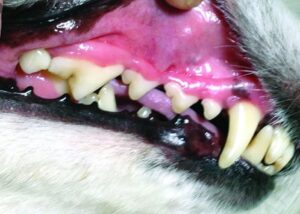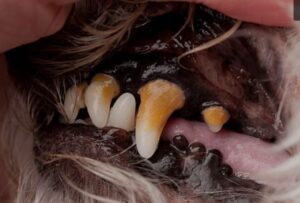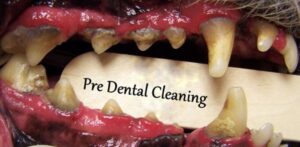National Pet Dental Health Month

February is Pet Dental Health Month, so it’s time to think teeth. Dental disease is the most common major health conditions in cats and dogs and according to the American Veterinary Dental Society (AVDS), 80% of dogs and 70% of cats will develop some form of oral disease by the age of three.


Pets suffer from oral problems so effective dental care is critical
There are a few tips to help prevent serious dental diseases in pets including brushing regularly. By not brushing your pet’s teeth, formations of bacteria, food particles, and saliva combine and collect between the gums and teeth, which progresses into tartar buildup. Over time this can develop into periodontal disease, a common disease affecting adult dogs and cats, but it is also a very preventable disease. Periodontal disease requires that the pet parent/owner is actively involved in maintaining healthy gums and teeth. Signs of dental disease include: bad breath, gingivitis (redness of gums), tart buildup, fractured teeth, and traumatic malocclusions. Other severe consequences of periodontal disease are endocarditis (inflammation of the heart lining) and cardiomyopathy (heart conditions). Which takes us to why prevention is so very important.
To brush pet’s teeth, you will need a (soft) toothbrush and a toothpaste formulated for pets. You must use a pet tooth paste as the human toothpastes have a high fluoride content which can be toxic to cats and dogs. In cats, brushing can be difficult so rubbing the cheeks for about 10-20 seconds each day appears to be helpful in preventing tartar buildup and stimulates the gums in between professional dental cleaning. In addition to brushing, providing adequate nutrition and chewable treats and toys are also helpful. There are several excellent dental chews and specially formulated diets which can provide significant improvements to your pet’s oral health. However, maintenance of oral hygiene alone is not enough. Regular professional dental therapy. is a must. Like humans, many pets, particularly middle-aged and older cats and dogs, require periodic professional scaling addition to on-going plaque control.



Great content! Super high-quality! Keep it up! 🙂